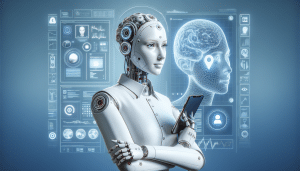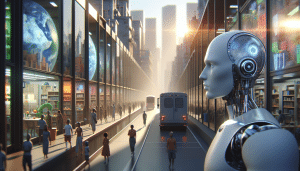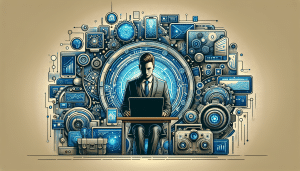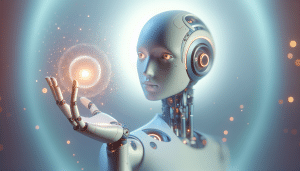AI Revolution Inside Everyday Life
Oliver Cooper October 20, 2025
Artificial intelligence shapes countless facets of daily routines, from communication to health. This guide explores AI technology, practical uses, smart home concepts, future forecasts, and things to consider when adopting AI. Learn how technology quietly transforms the world and what might be next for AI-powered living.
The Silent Spread of Artificial Intelligence
Artificial intelligence has made remarkable advances in the past decade, often blending seamlessly into daily routines. While some think AI only exists in high-level labs or sci-fi films, its reach extends to digital assistants, personalized recommendations, automotive safety features, and even healthcare tools. This subtle integration is a result of machine learning, natural language processing, and pattern recognition—fields that have exploded in progress. As people check the weather, order groceries, or select music, AI works tirelessly underneath, customizing experiences and streamlining decisions.
This transformation is not just technical; it’s deeply practical. For instance, fraud detection in financial transactions relies on AI’s ability to spot patterns that a human might miss. Voice recognition powers not just smart speakers, but also accessibility tools for those living with disabilities. Behind chatbot replies and search engine suggestions, sophisiticated AI algorithms are constantly at work. These systems learn from enormous datasets but are designed to function quietly, improving tasks without drawing attention to themselves. That’s why many never notice how extensively AI is woven into the very fabric of everyday living.
But how did these machine learning systems become so good so quickly? Cloud computing has played a critical role, offering vast storage and processing capabilities. It allows developers and scientists to build more accurate and robust models, delivering innovations that once seemed decades away. As the AI revolution quietly grows, experts predict that these technologies will deepen, quietly expanding their influence from simple recommendations to life-changing solutions in healthcare, education, and sustainability.
Everyday Examples of AI in Action
From waking moments to late-night streaming, smart technology powered by artificial intelligence reshapes simple activities. Virtual assistants respond to questions, schedule appointments, and deliver reminders. Entertainment platforms use recommendation engines to learn from viewing or listening habits, gradually presenting options closer to personal taste. Even route planning during commutes takes advantage of real-time traffic predictions, which depend on machine learning to suggest the fastest path. AI is often invisible, but its impact is continually felt across multiple domains.
Healthcare benefits from AI in ways that were previously unimaginable. Medical imaging systems can highlight irregularities for doctors to review, sometimes detecting subtle issues long before symptoms become obvious. Monitoring apps track fitness, sleep, or vital signs, translating raw data into actionable suggestions for wellness. In retail, online shopping is greatly enhanced by chatbots, inventory forecasting, and fraud prevention tools. Each time a purchase is made or a product is shipped, multiple AI-related processes help facilitate the transaction. These systems learn, adapt, and get better as more data comes in.
AI even reaches the classroom. Personalized learning apps tailor content to student performance, creating adaptive challenges that keep learners engaged. Language translation tools, spell-checkers, and even grading programs are all supported by machine intelligence. In many cases, the best AI applications support human effort, acting as an always-available collaborator. The convenience and reliability of AI-powered tools continue to expand, bringing new efficiencies without demanding specialized technical expertise from users.
Building Smarter Homes with Technology
Smart homes have moved from futuristic dream to mainstream reality, blending artificial intelligence with everyday devices. Thermostats learn temperature preferences, adjusting settings based on time of day and usage patterns to optimize comfort while cutting down on unnecessary energy consumption. Smart lighting responds to occupancy, daylight, and even mood, providing illumination while minimizing waste. Security systems use AI-driven surveillance to spot anomalies, filter out typical activity, and notify owners only in rare or specific cases, improving peace of mind without overwhelming false alerts.
Interconnected appliances are also making a difference. Refrigerators track supplies and suggest recipes, robot vacuums learn floor plans for efficient cleaning, and voice-activated controls add convenience to routine tasks. Each device may seem simple, but taken together, these AI-powered systems offer a new kind of living space—responsive, predictive, and easy to personalize. People can spend less time on repetitive chores and more time on the things that matter most to them. This smart home evolution highlights how AI moves from isolated gadget to all-encompassing ecosystem.
Adoption of home automation comes with important considerations. Privacy is a concern, as devices collect and process data to make decisions. Cybersecurity is critical to protect these interconnected systems from being compromised. Research indicates that clear guidelines, regular updates, and transparent privacy policies can mitigate many risks (Source: U.S. Department of Energy). Users are encouraged to understand the range of available options and how to secure their environment before fully integrating AI tech into their homes.
Shaping the Future: Emerging Trends in AI
The future of artificial intelligence is being written every day, with trends pointing toward increasingly autonomous and capable systems. AI research is rapidly advancing in the fields of natural language generation, computer vision, and reinforcement learning. Scientists anticipate applications in self-driving vehicles, healthcare diagnostics, financial market analysis, and more. These advances depend on massive, high-quality datasets and careful engineering to ensure that systems work safely and reliably.
Ethical considerations are gaining attention as AI expands its role. Transparent decision-making, bias reduction, and data protection are areas of active research, especially in sensitive applications like legal, hiring, or health tech. There is a growing consensus that AI will reach its highest potential when designed with inclusivity, security, and fairness in mind. Developers and regulators alike are working together on standards and frameworks to keep innovation aligned with public good (Source: European Commission).
Some experts suggest that the next wave of AI could unlock opportunities in sustainability, from optimizing energy grids to predicting climate change impacts. As more organizations deploy AI for scientific research, medical breakthroughs, and sustainable agriculture, society at large may benefit from smarter, better-informed decision-making. The challenge will be ensuring equitable access and managing risks associated with rapid technological advancement. Exploring these possibilities brings both excitement and responsibility for the future.
Adopting AI in Personal and Social Contexts
People face numerous choices about how and when to adopt AI technologies. Decisions depend on personal values, comfort with new tools, and a willingness to balance convenience against privacy. Some embrace virtual assistants and connected devices while others approach slowly, taking time to research privacy settings or alternative providers. Safety, cost, trust, and social acceptance are all factors that shape adoption rates. Understanding how AI works eases transitions and demystifies misconceptions around its use.
For families, educators, or small businesses, AI offers customized solutions. In education, adaptive learning platforms can help bridge achievement gaps, making content accessible to people with different learning styles (Source: National Science Foundation). For senior citizens, health-monitoring wearables and fall-detection algorithms can quietly offer extra reassurance. In professional fields, AI automates repetitive processes, freeing up time for creative and strategic work. Well-designed tools meet individual and community needs in flexible ways.
Social implications deserve careful attention. AI’s ability to replicate patterns from data means inherited biases may appear in practical tools. Ongoing investment in fairness, accountability, and transparency is essential. Many experts suggest ongoing dialogue between technology builders, policymakers, and end users—promoting open standards and balancing technical progress with ethical clarity. Harvesting the benefits of AI rests on active engagement and vigilance from all stakeholders.
Preparing for the Next Wave of Innovation
The accelerating pace of AI development means people must stay informed to understand upcoming changes. Educational resources, community workshops, and online courses on data literacy, ethics, and basic programming prepare individuals to make informed choices about the technologies they encounter. Organizations are encouraged to invest in upskilling their workforce so that everyone is ready for inevitable shifts brought by automation and smart systems.
There’s still uncertainty about where AI might lead. Will it enhance creativity or automate away too many jobs? Being prepared means developing adaptable skills—like critical thinking, collaboration, and digital fluency. Experience shows that those who embrace lifelong learning are better equipped to navigate AI-driven change. Free, non-profit-backed courses and publicly available information sources lower barriers for entry and build a foundation for continued adaptation (Source: MIT OpenCourseWare).
Successful adaptation isn’t just about skill acquisition. It involves thoughtful policy, inclusive design, and broad community input. As global society steers through the next stage of the AI revolution, dialogue between technologists, regulators, and the public will keep innovations on the right track. Ongoing feedback ensures that AI works for everyone—improving lives while safeguarding dignity, security, and opportunity for future generations.
References
1. National Science Foundation. (n.d.). Artificial Intelligence. Retrieved from https://www.nsf.gov/news/special_reports/ai/
2. U.S. Department of Energy. (n.d.). Artificial Intelligence for Smart Homes. Retrieved from https://www.energy.gov/eere/buildings/articles/how-artificial-intelligence-helps-smart-buildings
3. European Commission. (n.d.). Ethics guidelines for trustworthy AI. Retrieved from https://digital-strategy.ec.europa.eu/en/policies/ehtics-guidelines-trustworthy-ai
4. MIT OpenCourseWare. (n.d.). Artificial Intelligence. Retrieved from https://ocw.mit.edu/courses/electrical-engineering-and-computer-science/6-034-artificial-intelligence-fall-2020/index.htm
5. Stanford University. (n.d.). AI Index Report. Retrieved from https://aiindex.stanford.edu/report/
6. World Economic Forum. (n.d.). Artificial Intelligence at the Intersection of People and Technology. Retrieved from https://www.weforum.org/reports/artificial-intelligence-at-the-intersection-of-people-and-technology/







